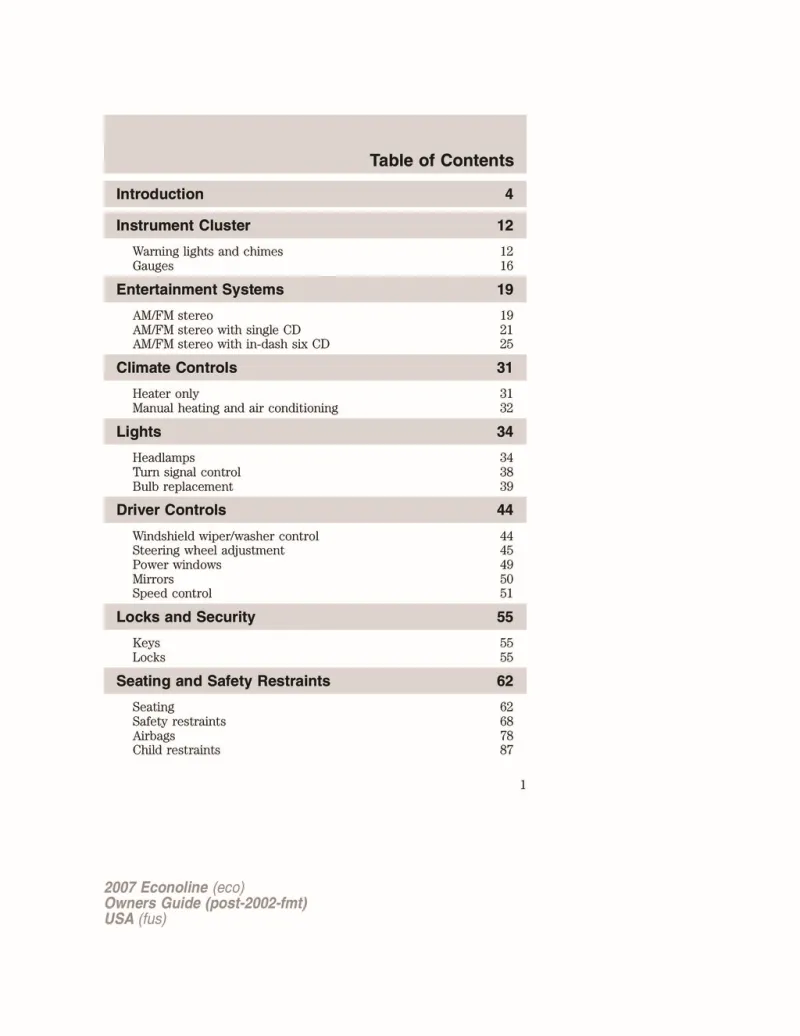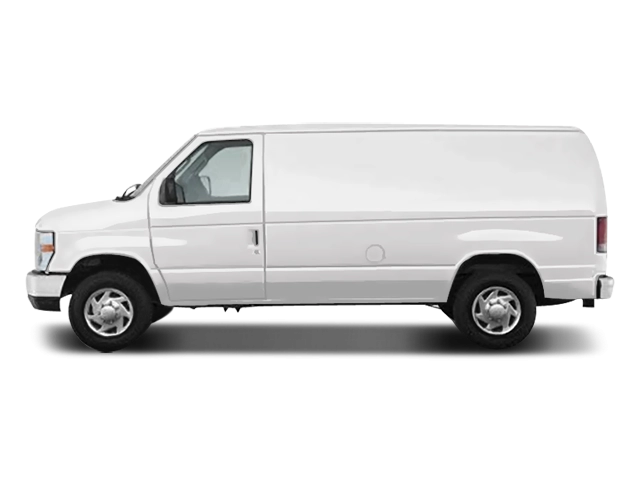2007 Ford E150 Owner's Manual

Table of Contents
2007 Ford E150 Overview
Introduction
The 2007 Ford E150 is a versatile full-size van designed to meet the demands of families, businesses, and outdoor enthusiasts alike. With its robust build and expansive interior, this model proves itself as a reliable workhorse while offering comfort and utility for everyday use. The E150 is particularly known for its accommodating space and solid performance, making it a popular choice for those needing a reliable transportation solution.
Powertrains
The 2007 Ford E150 comes with a choice of two capable powertrains. The standard engine is a 4.6-liter V8, delivering a responsive 305 horsepower, allowing for confident acceleration and the ability to carry heavy loads. For those seeking added power, the optional 5.4-liter V8 produces an impressive 300 horsepower and enhances towing capabilities, making it ideal for trailers or other towing tasks. Both engine options are paired with a smooth-shifting four-speed automatic transmission, ensuring a comfortable driving experience.
Trims
Features
This model is equipped with a range of features designed for convenience and safety. Standard features include a front airbag system and antilock brakes, with optional enhancements such as a rearview camera, upgraded audio systems, and cruise control. The spacious interior can be customized with various seating arrangements, ensuring ample room for passengers or cargo.
Owner's Manual
User manual download
The Ford E150 owner manual for the 2007 model year is to be found in PDF downloadable format on this page. The owner manual for the model year 2007 is free and in English, but the repair manuals are usually not easy to get and may cost more.
Manual Questions
Fill the form below and someone will help you!

